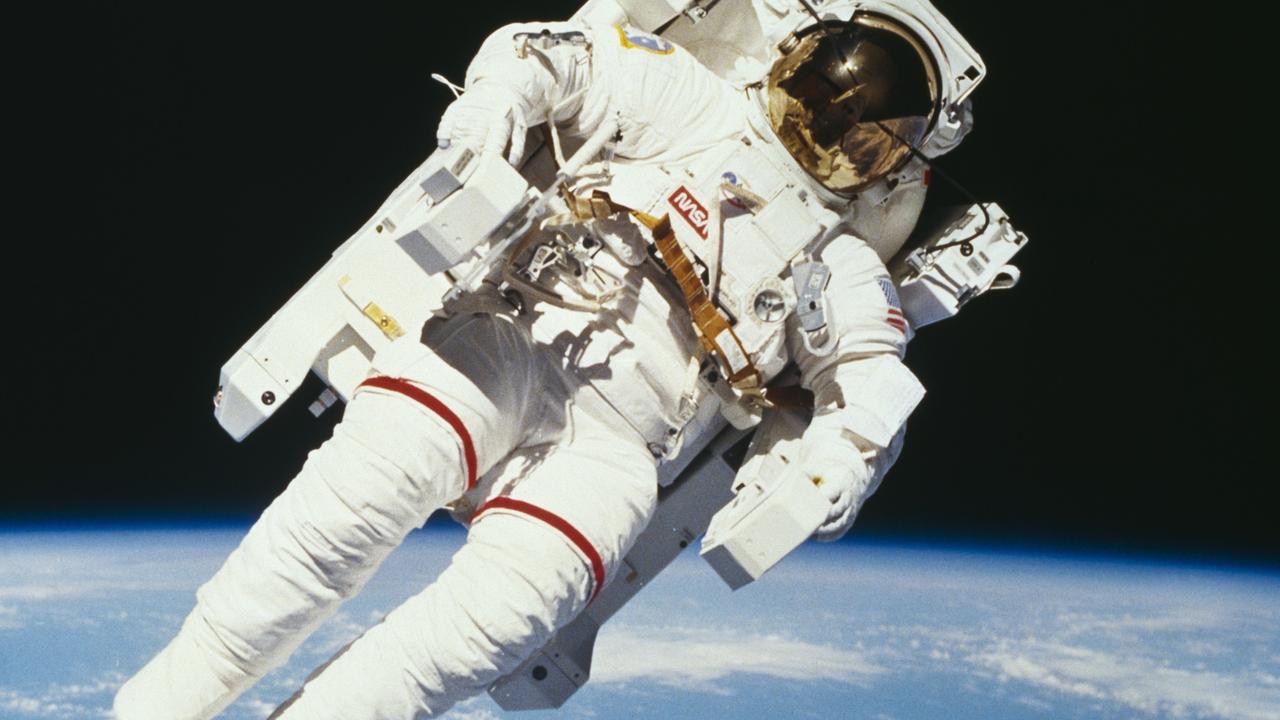Microgravity means more headaches for astronauts in space
Headaches experienced by astronauts in space mostly occur during the first couple of weeks of their mission, a new study finds

READING LEVEL: ORANGE
Research in the expanding field of space medicine* has identified many ways in which a microgravity* environment and other factors can meddle with the human body during space missions. A new study has added to the field by showing that astronauts are more likely to experience headaches in space than previously known.
The study involved 24 astronauts from the U.S., European and Japanese space agencies who travelled aboard the International Space Station for up to 26 weeks. All but two of them reported experiencing headaches in space. This was a larger proportion than the researchers had expected based on prior anecdotal evidence*. The headaches – some resembling migraines and others resembling tension headaches* – occurred not only during the first couple of weeks in space as the body goes through the process of adapting to microgravity, but also later.

The headaches occurring during the early period often present as migraine-like while those experienced later in space travel present more like a tension headache, the study found.
“We hypothesise that different mechanisms are involved for the early headache episodes – the first one to two weeks in space – versus later headache episodes,” said neurologist WPJ Van Oosterhout in the Netherlands.
“In the first week, the body has to adapt to the lack of gravity, known as space adaptation syndrome*. This phenomenon is similar to motion sickness*, and can cause nausea, vomiting and dizziness, and headaches,” Van Oosterhout said. “The later headaches could result from an increase in intracranial* pressure. Due to microgravity, there is more fluid accumulating in the upper part of the body and head, resulting in higher pressure in the skull.”
Migraines* experienced on Earth are often throbbing and pulsating headaches lasting four to seven hours, accompanied by symptoms such as nausea, vomiting and hypersensitivity* to light and sound, Van Oosterhout said. Tension-type headaches on Earth usually are a more dull pain felt over the entire head without those other symptoms, Van Oosterhout added.

The astronauts – 23 men and one woman, with an average age of about 47 – were aboard the International Space Station for missions that took place from November 2011 to June 2018, with a total of 378 headaches reported by 22 of the 24 astronauts during a total of 3,596 days in orbit. None of the 24 reported headaches in the three months after returning to Earth.
None had ever been diagnosed with migraines prior to their space missions and none had a history of recurrent* headaches.

Experts are unsure of how much of a barrier* these effects might be on human space travel over extended periods, for instance for journeys to our neighbouring planet Mars or beyond.
“The honest answer is that we don’t know the effects of long-duration space travel on the human body,” Van Oosterhout said. “It is clear that even short-term – days or weeks – to medium-term – weeks or months – duration exposure* to microgravity already has some effects, mostly reversible, on the human body.”
GLOSSARY
- space medicine: the field of medicine concerned with the health effects of space travel on astronauts
- microgravity: the condition experienced in space where the force of gravity is greatly reduced, resulting in a weightless environment
- anecdotal evidence: evidence based on personal accounts rather than research
- intracranial pressure: pressure inside the skull
- motion sickness: a condition characterised by nausea, vomiting, and dizziness, often experienced when travelling in vehicles or in microgravity environments
- migraines: severe headaches often accompanied by nausea, vomiting, and sensitivity to light and sound
- tension headaches: headaches characterised by a dull pain felt over the entire head
- space adaptation syndrome: a condition experienced by astronauts when adapting to the lack of gravity in space, characterised by symptoms such as nausea, vomiting, dizziness, and headaches
- hypersensitivity: extreme sensitivity to stimuli such as light or sound
- barrier: an obstacle or hindrance
- recurrent: occurring repeatedly
- duration exposure: the length of time exposed to a certain condition or environment
EXTRA READING
Aussie kids need less homework, more play
Mystery lunar sample to share its secrets
QUICK QUIZ
- What is space adaptation syndrome, and how does it affect astronauts in space?
- What are the two types of headaches mentioned in the article, and how do they differ?
- How many astronauts were involved in the study, and what were some of the findings regarding headaches in space?
- What are some symptoms of migraines experienced on Earth?
- Why are experts unsure of the effects of long-duration space travel on the human body?
LISTEN TO THIS STORY
CLASSROOM ACTIVITIES
1. Finding validity
It is important to consider the validity of scientific findings. Identify three things about this research that are convincing evidence to back up the hypothesis.
Identify one improvement to the data that could further support the hypothesis.
Time: allow 15 minutes to complete this activity
Curriculum Links: English; Science
2. Extension
Do the findings of this research make space travel seem more appealing to you or less appealing? Explain your reasoning.
Time: allow 10 minutes to complete this activity
Curriculum Links: English; Science
VCOP ACTIVITY
Wow word recycle
There are plenty of wow words (ambitious pieces of vocabulary) being used in the article. Some are in the glossary, but there might be extra ones from the article that you think are exceptional as well.
- Identify all the words in the article that you think are not common words, and particularly good choices for the writer to have chosen.
- Select three words you have highlighted to recycle into your own sentences.
- If any of the words you identified are not in the glossary, write up your own glossary for them.
Extension
Find a bland sentence from the article to up-level. Can you add more detail and description? Can you replace any base words with more specific synonyms?
Down-level for a younger audience. Find a sentence in the article that is high level. Now re-write it for a younger audience so they can understand the words without using the glossary.

